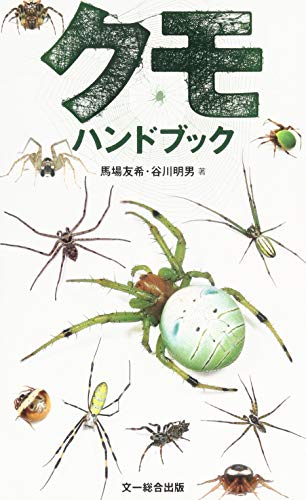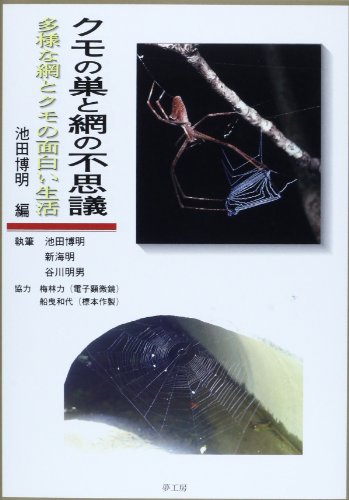3 0 0 0 OA 日本産ゴミグモ属 (クモ目: コガネグモ科) の分類学的研究
- 著者
- 谷川 明男
- 出版者
- Arachnological Society of Japan
- 雑誌
- Acta Arachnologica (ISSN:00015202)
- 巻号頁・発行日
- vol.41, no.1, pp.11-85, 1992 (Released:2007-03-29)
- 参考文献数
- 74
- 被引用文献数
- 19 21
ゴミグモ属のクモ類は日本から15種が記録されていたが, 筆者は, 日本各地から得られた多数の標本を検討した結果, 22種の生息を確認した. 従来, 日本でシマゴミグモと呼ばれ, C. insulana (COSTA, 1834) に同定されてきたものには, 2種が混同されていたことが判明した. この2種をヨーロッパ産の C. insulana の標本と照合した結果, いずれも別種であった. 一方, 原記載以来採集記録がなかった C. confusa BÖSENBERG et STRAND, 1906のタイプ標本を検討した結果, いままでシマゴミグモとされてきた2種のうち1種はこれに同定できた. もう1種は新種として記載した. また, ハマゴミグモについては, 従来, C. camelodes (THORELL, 1878) に同定されてきたが, タイプ標本との照合により, 別種であることが判明し, 新種として記載した. さらに, C. atrata BÖSENBERG et STRAND, 1906カラスゴミグモ, C. argenteoalba BÖSENBERG et STRAND, 1906ギンメッキゴミグモ, C. ginnaga YAGINUMA, 1959ギンナガゴミグモのそれぞれに混同されていたと思われる近似の別種など8種を新種として記載した. 一方, S. SAITO (1939) によって青森県から記録された C. conica (PALLAS, 1772) コゴミグモについては, S. SAITO (1939) が同定した標本の保管場所が不明で検討できないことと, 今回検討した多くの標本の中にそれと同定できるものが全く見いだせなかったことから, 本論では扱わなかった.本論で扱った22種の種名は次のとおりである. C. octotuberculata KARSCH, 1878 ゴミグモ, C. laticauda BÖSENBERG et STRAND, 1906キジロゴミグモ, C. monticola BÖSENBERG et STRAND, 1906ヤマゴミグモ, C. angusta sp. nov. ヤセゴミグモ (新称), C. onoi sp. nov. オノゴミグモ (新称), C. omonaga sp. nov. シマゴミグモ, C. confusa BÖSENBERG et STRAND, 1906ミナミノシマゴミグモ (新称), C. japonica BÖSENBERG et STRAND, 1906ヤマトゴミグモ, C. norihisai sp. nov. オガサワラゴミグモ (新称), C. atrata BÖSENBERG et STRAND, 1906カラスゴミグモ, C. hamulata sp. nov. カギヅメカラスゴミグモ (新称), C. maritima sp. nov. ハマゴミグモ, C. psylla (THORELL, 1892) ヒメマルゴミグモ, C. mulmeinensis (THORELL, 1887) トゲゴミグモ, C. vallata KEYSERLING, 1886 マルゴミグモ, C. sachikoae sp. nov. ミツカドゴミグモ (新称), C. alba sp. nov. シロゴミグモ (新称), C. argenteoalba BÖSENBERG et STRAND, 1906 ギンメッキゴミグモ, C. okumae sp. nov. オオクマギンメッキゴミグモ (新称), C. ginnaga YAGINUMA, 1959ギンナガゴミグモ, C. kumadai sp. nov. クマダギンナガゴミグモ (新称), C. sedeculata BÖSENBERG et STRAND, 1906ヨツデゴミグモ.
2 0 0 0 OA 日本産コガネグモダマシ属のクモ類
- 著者
- 谷川 明男
- 出版者
- Arachnological Society of Japan
- 雑誌
- Acta Arachnologica (ISSN:00015202)
- 巻号頁・発行日
- vol.38, no.2, pp.31-47, 1989 (Released:2007-03-29)
- 参考文献数
- 21
- 被引用文献数
- 7 9
現在まで, 日本産の Larinia 属としては, コガネグモダマシ L. argiopiformis BÖSENBERG et STRAND のみが知られていたが, 新たにネッタイコガネグモダマシ (新称) L. fusiformis (THORELL), ミナミコガネグモダマシ (新称) L. phthisica (L.KOCH), キタコガネグモダマシ (新称) L. jeskovi MARUSIK の3種の分布を確認し, ムネグロコガネグモダマシ (新称) L. onoi とセキグチコガネグモダマシ (新称) L. sekiguchii の2新種を記載した。これにより日本産の Larinia 属は6種となった。
1 0 0 0 OA 日本のクモの分類学の現状
- 著者
- 谷川 明男
- 出版者
- 日本動物分類学会
- 雑誌
- タクサ:日本動物分類学会誌 (ISSN:13422367)
- 巻号頁・発行日
- vol.20, pp.23-25, 2006-02-20 (Released:2018-03-30)
- 参考文献数
- 17
About 130 years has passed since L. Koch (1878) published the first paper on Japanese spiders. Today there are still many undescribed species in Japan. Based on papers published in the journal of the Arachnological Society of Japan during the last five years, three professional and six amateur researchers are now actively studying the taxonomy of Japanese spiders. Most of their publications are descriptive studies, e.g. description of new species, revision of a genus or a family. Phylogenetic analyses using morphological or molecular data have been published for many countries, but not for Japan. It is becoming increasingly urgent to foster young spider taxonomists. The traditional approach in taxonomy seems to be arbitrary and therefore not attractive for young researchers. Japanese leading taxonomists should adopt modern methods such as phylogenetic analyses in order to attract young successors.
- 著者
- 谷川 明男 宮下 直
- 出版者
- 日本蜘蛛学会
- 雑誌
- Acta arachnologica : organ of the Arachnological Society of Eastern Asia (ISSN:00015202)
- 巻号頁・発行日
- vol.57, no.1, pp.19-35, 2008-07-31
- 参考文献数
- 28
- 被引用文献数
- 5
Japanese spiders of the genus Dolomedes are revised and its phylogeny is inferred by mt-DNA. <I>Dolomedes japonicus</I> Bösenberg & Strand 1906 and <I>D. angustivirgatus</I> Kishida 1936 are removed from the synonymy. <I>Dolomedes fimbriatoides</I> Bösenberg & Strand 1906 and <I>D. hinoi</I> Kayashima 1952 are newly synonymized with <I>D. sulfureus</I> L. Koch 1878, and <I>D. stellatus</I> Kishida 1936 is synonimized with <I>D. japonicus</I>. Two new species, <I>D. fontus</I> and <I>D. silvicola</I> are described. Relative leg length and proportion of male palpal tibia are considered as good keys to indentify <I>Dolomedes</I> spiders, whose genital organs closely resemble one another. <I>Dolomedes sulfureus</I> and <I>D. silvicola</I>, often found on vegetation, have much longer legs and male palpal tibia than their relatives that inhabit near water and run on water surface or hide under water when disturbed. Molecular phylogenetic analysis using mt-COI revealed the following; ((((<I>raptor</I>, <I>yawatai</I>), <I>japonica</I>), <I>orion</I>), (((<I>angustivirgatus</I>, <I>sulfureus</I>), <I>fontus</I>), (<I>silvicola</I>, <I>saganus</I>)), <I>horishanus</I>).
1 0 0 0 クモハンドブック
- 著者
- 馬場友希 谷川明男著
- 出版者
- 文一総合出版
- 巻号頁・発行日
- 2015
1 0 0 0 日本のクモの分類学の現状
- 著者
- 谷川 明男
- 出版者
- 日本動物分類学会
- 雑誌
- タクサ : 日本動物分類学会誌 (ISSN:13422367)
- 巻号頁・発行日
- no.20, pp.23-25, 2006-02-20
About 130 years has passed since L. Koch (1878) published the first paper on Japanese spiders. Today there are still many undescribed species in Japan. Based on papers published in the journal of the Arachnological Society of Japan during the last five years, three professional and six amateur researchers are now actively studying the taxonomy of Japanese spiders. Most of their publications are descriptive studies, e.g. description of new species, revision of a genus or a family. Phylogenetic analyses using morphological or molecular data have been published for many countries, but not for Japan. It is becoming increasingly urgent to foster young spider taxonomists. The traditional approach in taxonomy seems to be arbitrary and therefore not attractive for young researchers. Japanese leading taxonomists should adopt modern methods such as phylogenetic analyses in order to attract young successors.
1 0 0 0 クモの巣と網の不思議 : 多様な網とクモの面白い生活
- 著者
- 池田博明編 池田博明 新海明 谷川明男執筆
- 出版者
- 夢工房
- 巻号頁・発行日
- 2013

